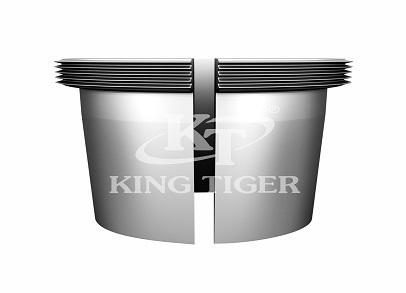Bearing sleeves, also known as bearing bushings, are used to reduce the friction between rotating shafts and stationary housing in machinery. The bearing sleeve acts as a cushion between the two parts, reducing wear and tear and extending the life of the equipment. In this blog, we will discuss the various uses of bearing sleeves and their benefits.
One of the primary uses of bearing sleeves is to reduce the noise and vibration caused by rotating machinery. Without a bearing sleeve, the contact between the rotating shaft and the stationary housing can create a significant amount of noise and vibration. This can lead to premature wear and tear of the equipment, resulting in frequent maintenance and replacement costs. Bearing sleeves act as a buffer between the two parts, reducing the noise and vibration and improving the overall performance and efficiency of the equipment.
Bearing sleeves are also used to compensate for any misalignment or deflection of the rotating shaft. In many applications, the shafts are not perfectly aligned or may deflect under certain loads, which can cause excessive wear and tear on the equipment. The bearing sleeve helps to compensate for this misalignment or deflection, providing a smoother and more efficient operation of the machinery.
Another use of bearing sleeves is to protect the shaft and housing from wear and damage. Over time, the contact between the rotating shaft and the stationary housing can cause significant wear and tear, which can eventually lead to the failure of the equipment. Bearing sleeves act as a sacrificial layer, absorbing the wear and tear and protecting the more critical parts of the machinery.
In conclusion, bearing sleeves play a crucial role in the smooth and efficient operation of machinery. They help to reduce noise and vibration, compensate for misalignment or deflection, and protect the shaft and housing from wear and damage. With proper installation and maintenance, bearing sleeves can significantly extend the life of the equipment and reduce maintenance and replacement costs. It is essential to choose the right type of bearing sleeve based on the application and operating conditions to ensure maximum performance and efficiency of the machinery.
